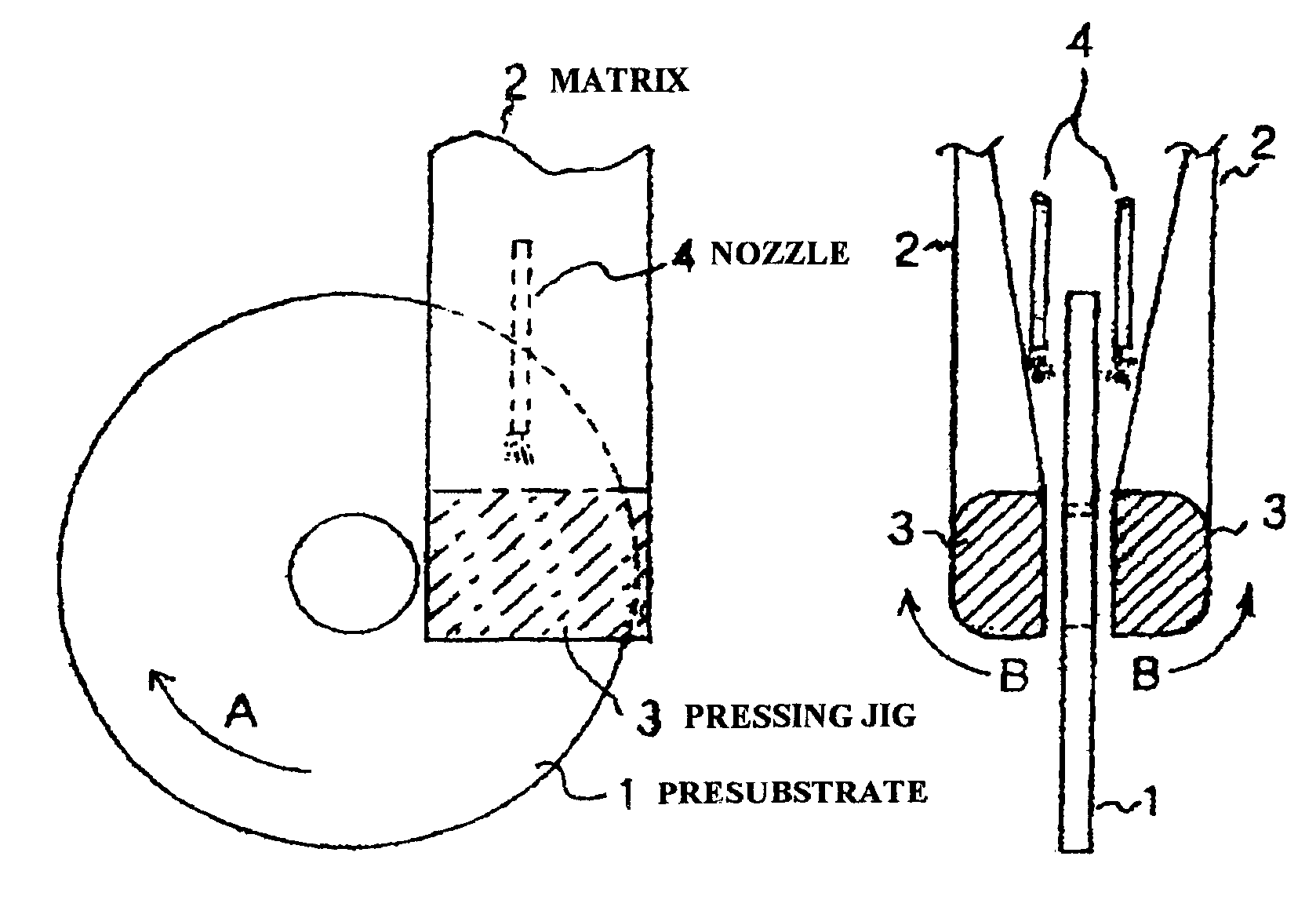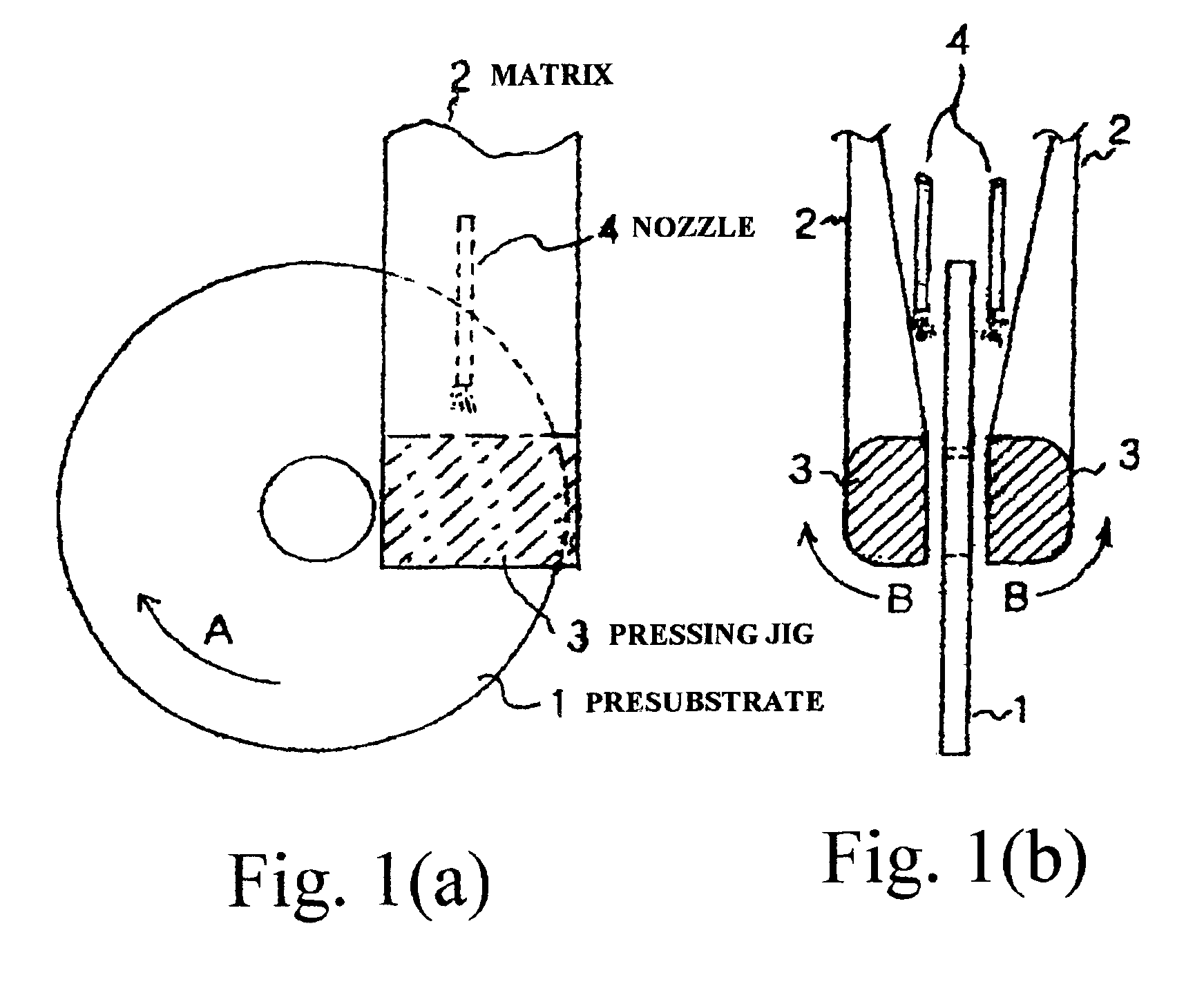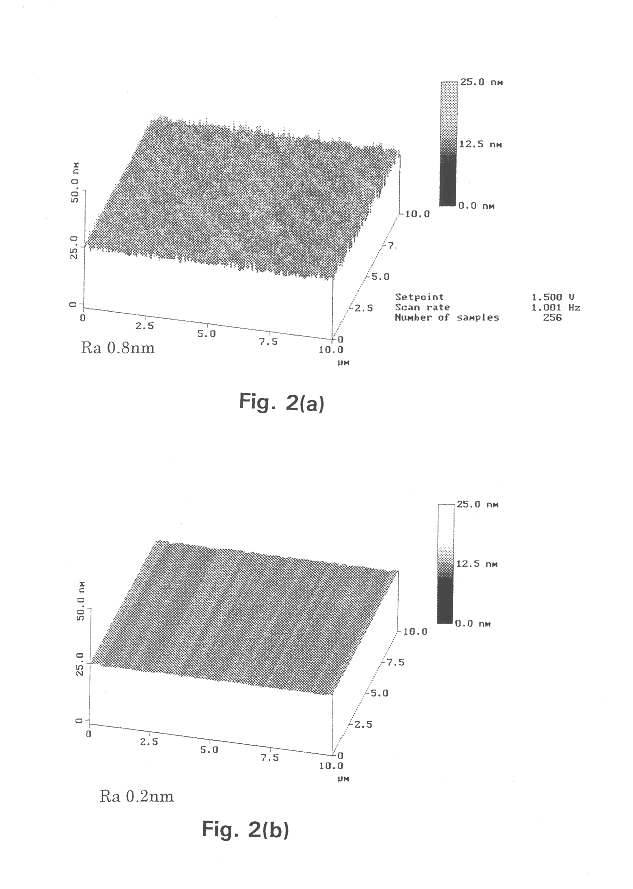Substrate for magnetic recording medium, manufacturing method thereof, and magnetic recording medium
a technology of magnetic recording medium and manufacturing method, which is applied in the direction of magnetic materials for record carriers, manufacturing tools, instruments, etc., can solve the problems of high revolution speed of a substrate, affecting the quality of the product, so as to improve the machine characteristics and increase the surface roughness accuracy
- Summary
- Abstract
- Description
- Claims
- Application Information
AI Technical Summary
Benefits of technology
Problems solved by technology
Method used
Image
Examples
example 2
A side of 2.5-inch glass disk was lapped. Then, the side was mirror-finished with the machine shown in FIG. 1. An abrasive tape, which consisted of a urethane-foam pad, was used. The abrasive suspension was cerium oxide abrasive powder mixed with water at a concentration of 1 percent by weight. The abrasive powder had an average diameter of 1.5 {character pullout}m. The abrasive tape was pressed in contact with part of a side of a revolving disk contacting 20 percent of the area of the side and with a pressure of 62.5 g / cm.sup.2. The disk revolved at a rate of 200 rpm. The glass disk had a center line average height Ra of 0.5 nm after the treatment, in contrast to its center line average height Ra of 15 nm before the treatment.
example 3
The side of a 2.5-inch glass disk was lapped. The first step of polishing was applied to the side, instead of the usual two-step polishing, followed by chemical strengthening. Then, the side was treated with a machine shown in FIG. 1. An abrasive tape, which consisted of a urethane-foam pad, was used. The abrasive suspension was cerium oxide abrasive powder mixed with water at a concentration of 1 percent by weight. The abrasive powder had an average diameter of 1.5 {character pullout}m. The abrasive tape was pressed in contact with part of a side of a revolving disk contacting 20 percent by area of the side and with a pressure of 40 g / cm.sup.2. The disk revolved at a rate of 200 rpm.
The surface roughness of a glass disk side was examined and evaluated before and after the treatment with an atomic force microscope (AFM). The glass disk had center line average height Ra of 0.2 nm after the treatment, compared to its center line average height Ra of 0.8 nm before the treatment.
FIG. 2(...
example 4
The side of a 2.5-inch glass disk was lapped, polished in two steps, and chemically strengthened conventionally. The glass disk was textured in the circumferential direction with the machine shown in FIG. 1 to prevent stiction between a magnetic head and the recording medium. An abrasive tape, which consisted of a urethane-foam pad, was used. The abrasive suspension was cerium oxide abrasive powder mixed with water at a concentration of 1 percent by weight. The abrasive powder had an average diameter of 1.5 {character pullout}m. The abrasive tape was pressed in contact with part of a side of a revolving disk at a contact rate of 4 percent by area of the side and at a pressure of 440 g / cm.sup.2. The disk revolved at a rate of 100 rpm.
The glass disk had center line average height Ra of 0.5 nm before and after the treatment. The surface of the glass disk, however, was textured in the circumferential direction with maximum height Rmax of approximately 7 nm. Change in an alkaline content...
PUM
| Property | Measurement | Unit |
|---|---|---|
| diameter | aaaaa | aaaaa |
| height Ra | aaaaa | aaaaa |
| height Ra | aaaaa | aaaaa |
Abstract
Description
Claims
Application Information
 Login to View More
Login to View More - R&D
- Intellectual Property
- Life Sciences
- Materials
- Tech Scout
- Unparalleled Data Quality
- Higher Quality Content
- 60% Fewer Hallucinations
Browse by: Latest US Patents, China's latest patents, Technical Efficacy Thesaurus, Application Domain, Technology Topic, Popular Technical Reports.
© 2025 PatSnap. All rights reserved.Legal|Privacy policy|Modern Slavery Act Transparency Statement|Sitemap|About US| Contact US: help@patsnap.com



